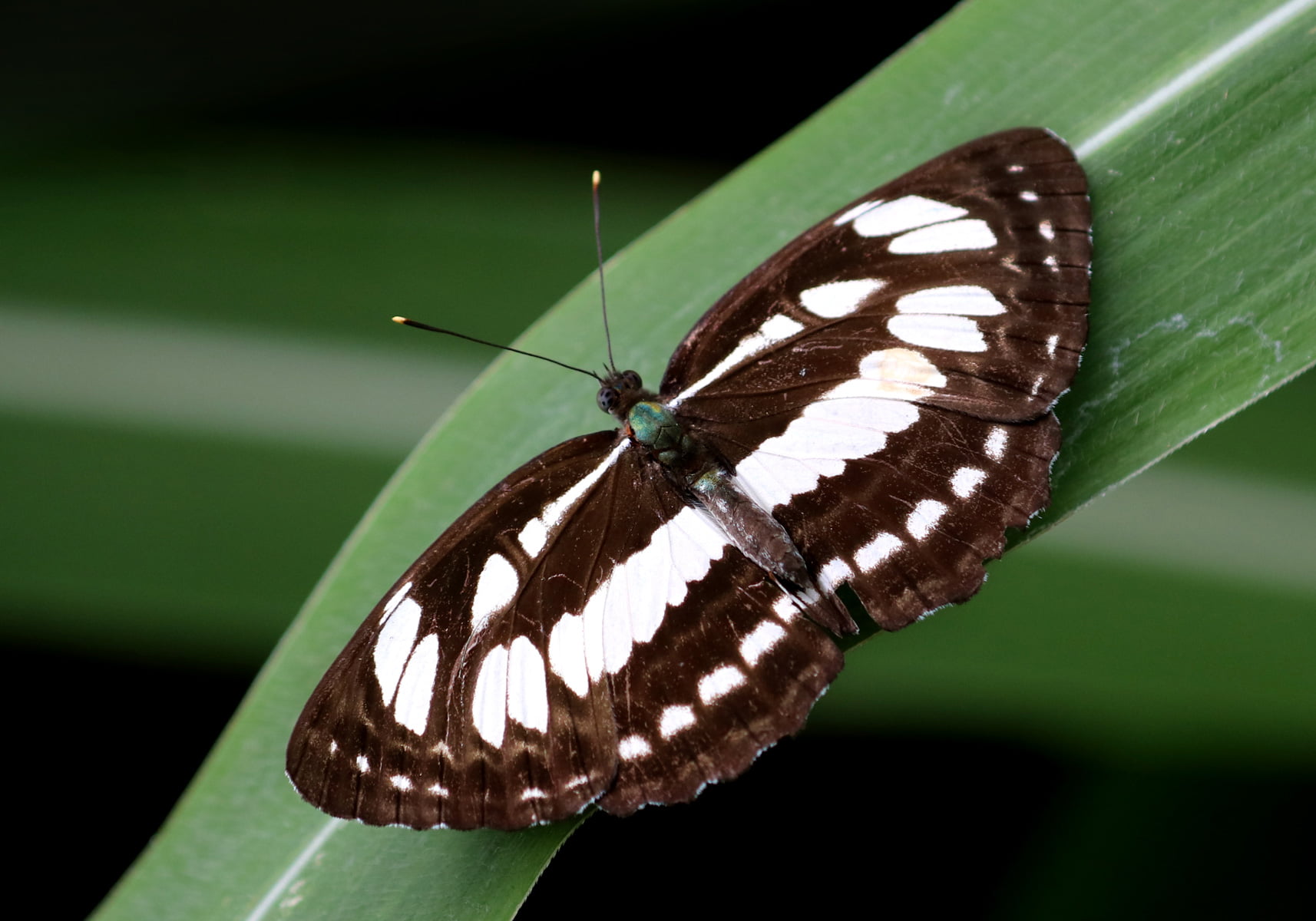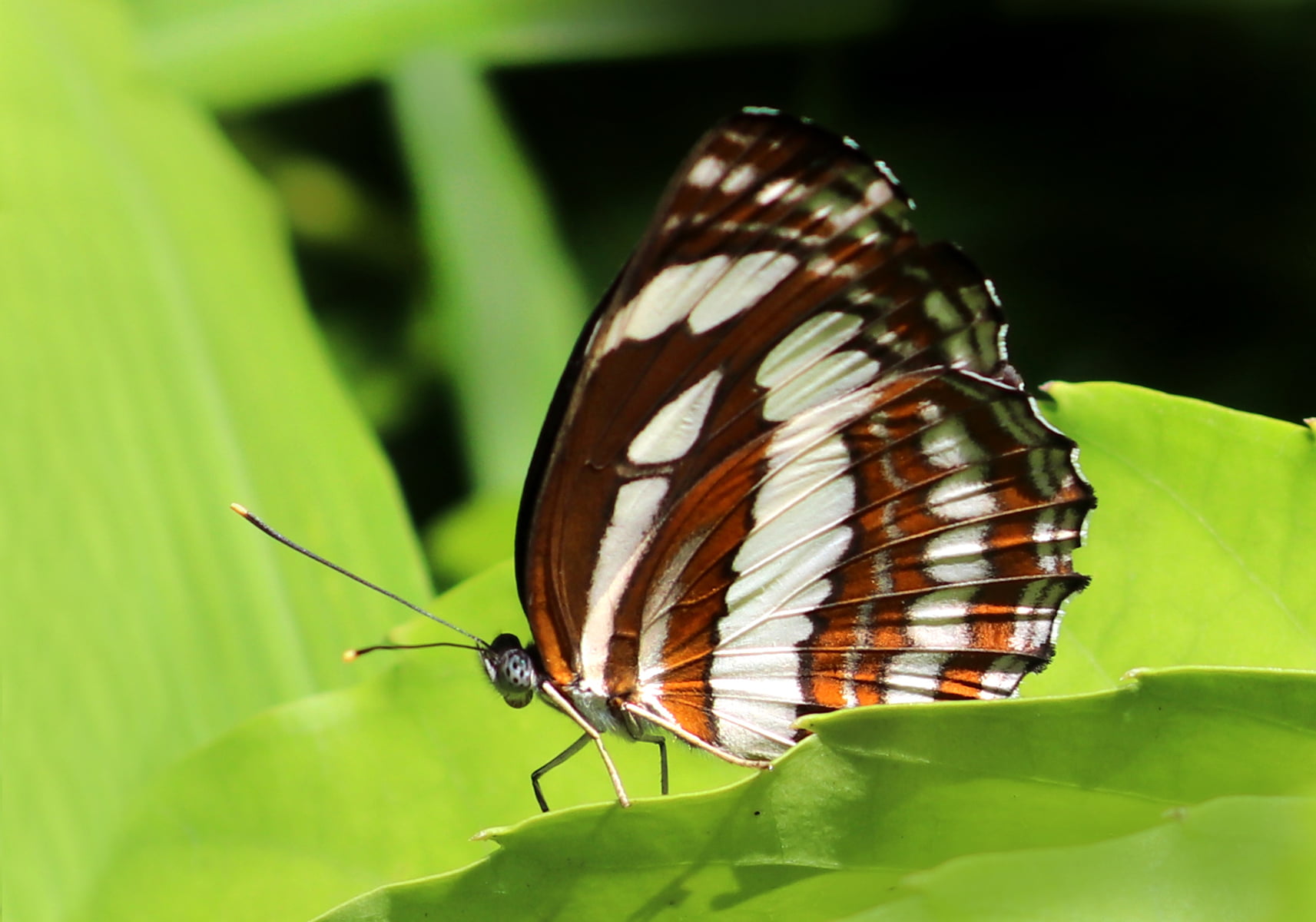Neptis hylas has black-and-white striped upperwings with a scaly stripe on the forewings with subtle “breaks”. The undersides of the forewings are golden brown in color, with a white discal band surrounded by a black stripe. The antennae, head and stomach are black, palpi, chest and lower abdomen are blackish white.
Larva: Neptis hylas larvae are dark green in color, the head capsule is brown with short setae. Its body was covered in many small turbecles and short setae. At a later stage, the color of the body becomes dark brown and looks prickly.
Pupa: Neptis hylas pupae are pale brown in color with lateral gold spots on the head.


